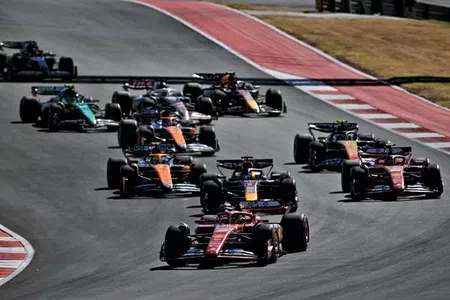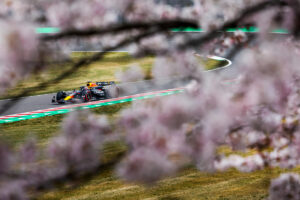news now:Mercedes explains decision not to give Hamilton….read more

Mercedes explains decision not to give Hamilton….read more
Mercedes Explains Decision Regarding Lewis Hamilton’s Race Setup at the United States Grand Prix
Mercedes technical director James Allison addressed why the team opted not to adjust Lewis Hamilton’s car setup or change his engine for the United States Grand Prix, despite his disappointing qualifying performance, which saw him start in 17th position. After qualifying, Hamilton suggested the possibility of starting from the pit lane to make changes to his car’s setup or to install a fresh power unit.
Allison acknowledged that the team considered this option but ultimately decided against it. He noted that while they had made adjustments to George Russell’s car following his crash, there was no clear justification for making similar changes to Hamilton’s car. “We didn’t actually have any reason to think there was much wrong with Lewis’s set-up,” Allison explained. He emphasized that Hamilton had the best bodywork available and, despite the unfavorable grid position, it made sense to start from where he qualified rather than from the pit lane.
Furthermore, the team decided against fitting a new engine for either car, citing significant financial implications under the current budget cap regulations. Allison elaborated that opting for a new power unit would have resulted in a grid penalty, forcing the team to start from the back and possibly from the pit lane. He highlighted the financial strain such a decision would impose: “If your engine breaks because it’s got a problem, then the rules allow for a replacement without impacting your cost cap. However, if you simply decide to change it for performance reasons, that comes at a financial cost.”
The potential performance gain from a fresh engine was deemed not worth the cost implications. “The freshness of a new power unit might marginally improve lap times, but the cost incurred would not justify that benefit,” Allison stated.
Allison also provided insights into the technical issues Hamilton faced during the sprint race. Before the sprint, Hamilton reported a “clicking” sound, prompting the team to investigate further. After examining the car post-race, they discovered that a bearing connected to one of the wishbones was beginning to fail. This malfunction contributed to inconsistent handling, affecting Hamilton’s performance. “This was causing the car to feel loose and unpredictable, impacting his sprint race experience,” Allison noted.
Fortunately, the issue was rectified before qualifying, allowing Hamilton to participate without the same mechanical concerns. However, despite resolving the bearing issue, Hamilton struggled unexpectedly during qualifying, failing to reach Q2. Allison remarked that while they had addressed the earlier problem, it did not reoccur during qualifying.
In summary, Mercedes’ decisions regarding Hamilton’s setup and engine were driven by a combination of technical assessments and budgetary considerations. The team aimed to make strategic choices that balanced performance with financial prudence, ultimately prioritizing the starting position over potential adjustments that could have led to more significant consequences on the grid.






